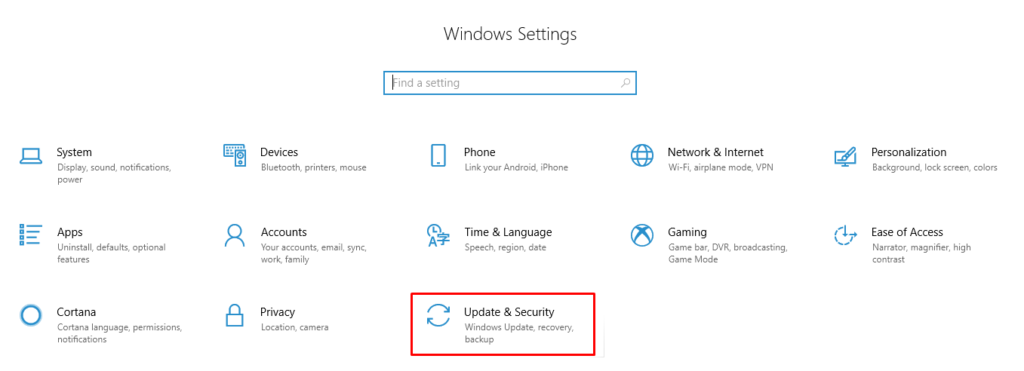File History Backup Feature (Windows 10)
Introduction:
Windows 10 File History is an easy way to get started with backing up your personal files since it is a built-in feature.
File History takes snapshots of your files and stores them on an external hard drive either connected over USB or your home network. it builds up a library of past versions of your documents that you can recover it.
Windows 10 File History is an essential part of any PC backup strategy, but it’s only one part. Ideally, you’d have your files in three places: the working copy on your internal hard drive, a local backup that you can access straight away, and a remote backup that keeps your files safe offsite. That way, if anything ever happens to your houses such as a fire, flood, or tornado, the third copy is still safely tucked away in the remote location.
To get started with File History in Windows 10:
- Open Start menu > Settings

- And then go to Update & Security.

- connect your external hard drive to a computer and then in the Settings app click the “+” next to Add a drive. You will see a prompt to choose an external drive, choose the one you want, and that’s it. File History is now archiving your data. An (on/off) slider will now appear under a new heading called “Automatically back up my files.”

- By default, Windows 10 File History will back up all the folders in your User folder, back up your files every hour (as long as the backup drive is available), and keep past copies of your files forever. To change any of those settings click on More options under the on/off slider.

- The next screen is called Backup options. Right at the top is an option to start a manual backup, and below that are drop-down menus to adjust how often you would like to run your backup with choices ranging from every 10 minutes to once a day.

- To add a folder to your backup, click the “+” under Back up these folders. To remove a folder, scroll down to find it, click on it to highlight, and then click Remove.
- The bottom of this screen you can also create a list of folders to specifically exclude, or stop backing up to the currently selected drive.

- Once File History is enabled, now you can access older versions of a file: Right-click on a file in File Explorer, and then select Restore previous versions. This is the same as right-clicking the file and going to the Properties > Previous Versions window.

It is always our pleasure to help and support you,
whether you are a business user or a home user we are always ready to provide support.
you can leave your comment here or contact us on email: info@andi-tech.com
also, you can have a look on our services at https://andi-tech.com
thanks for your valuable time visiting our site.

